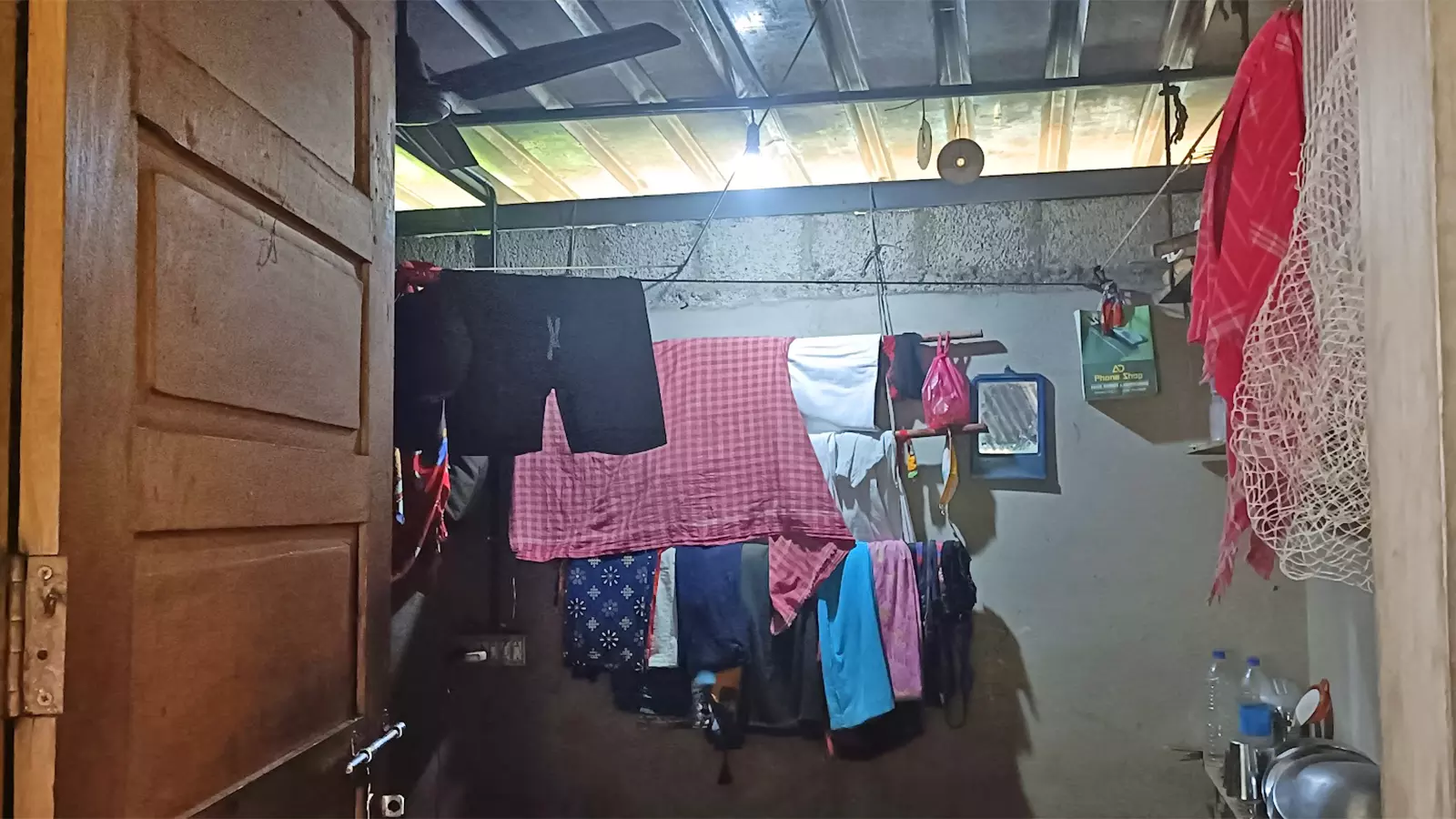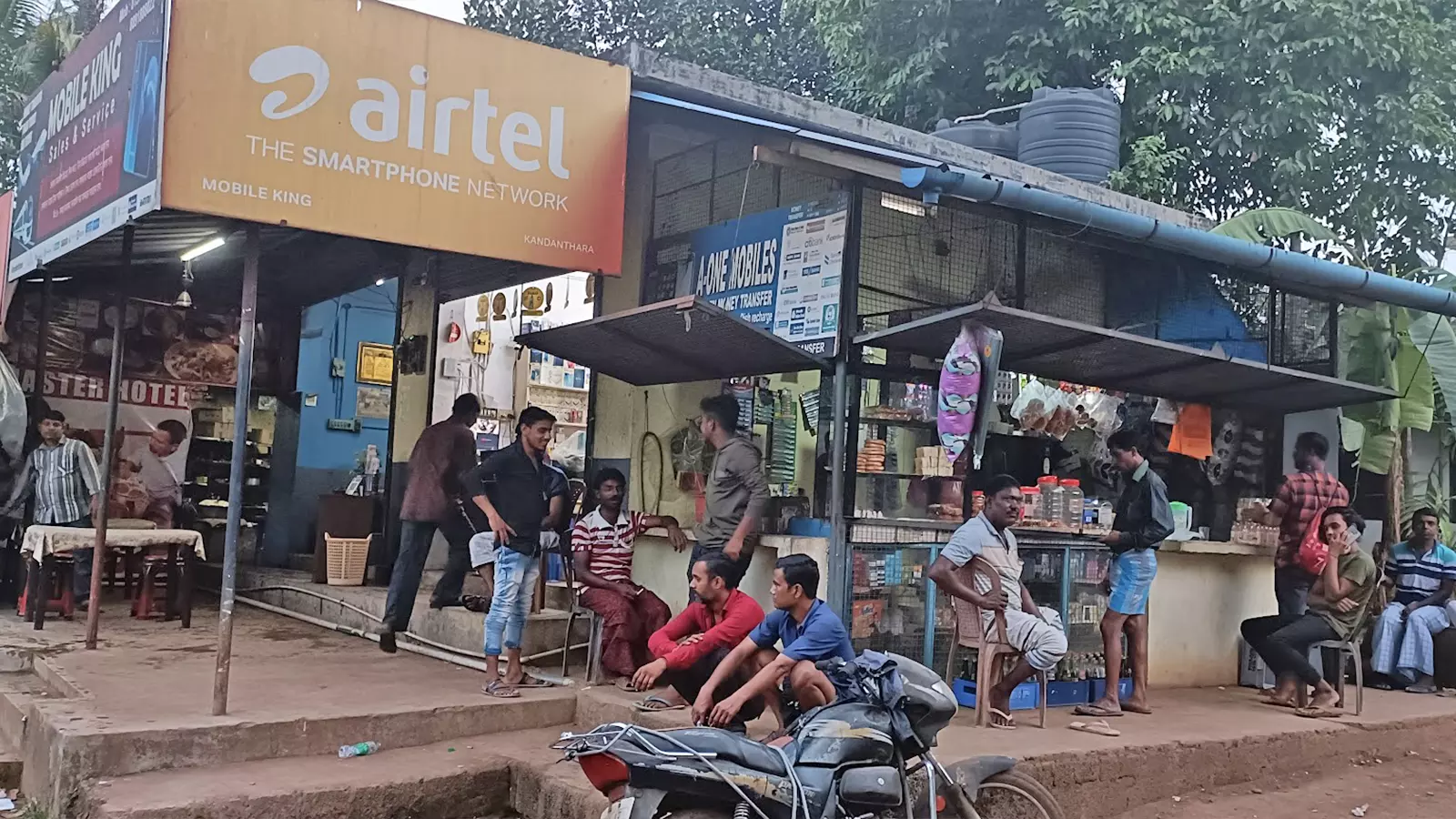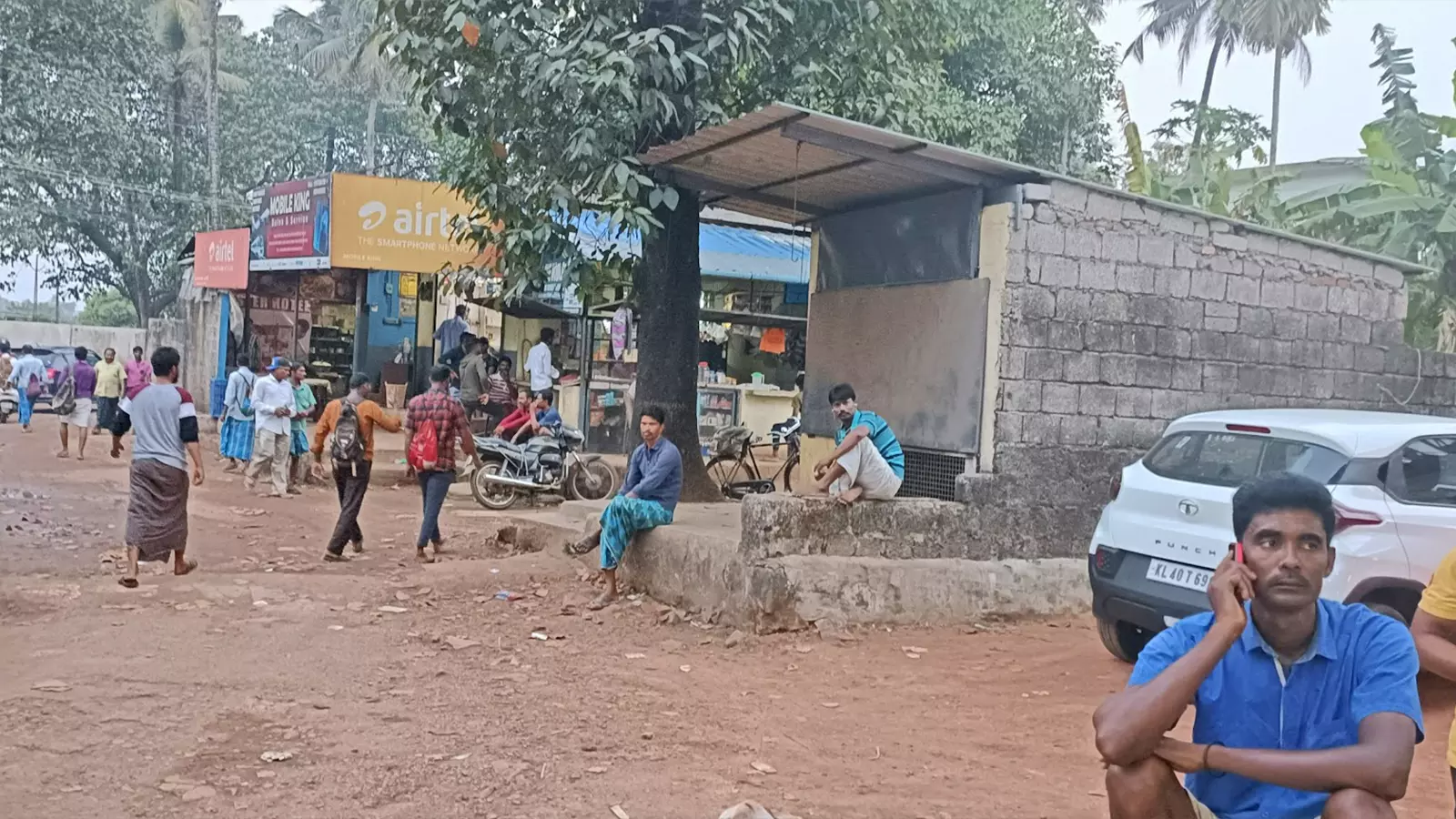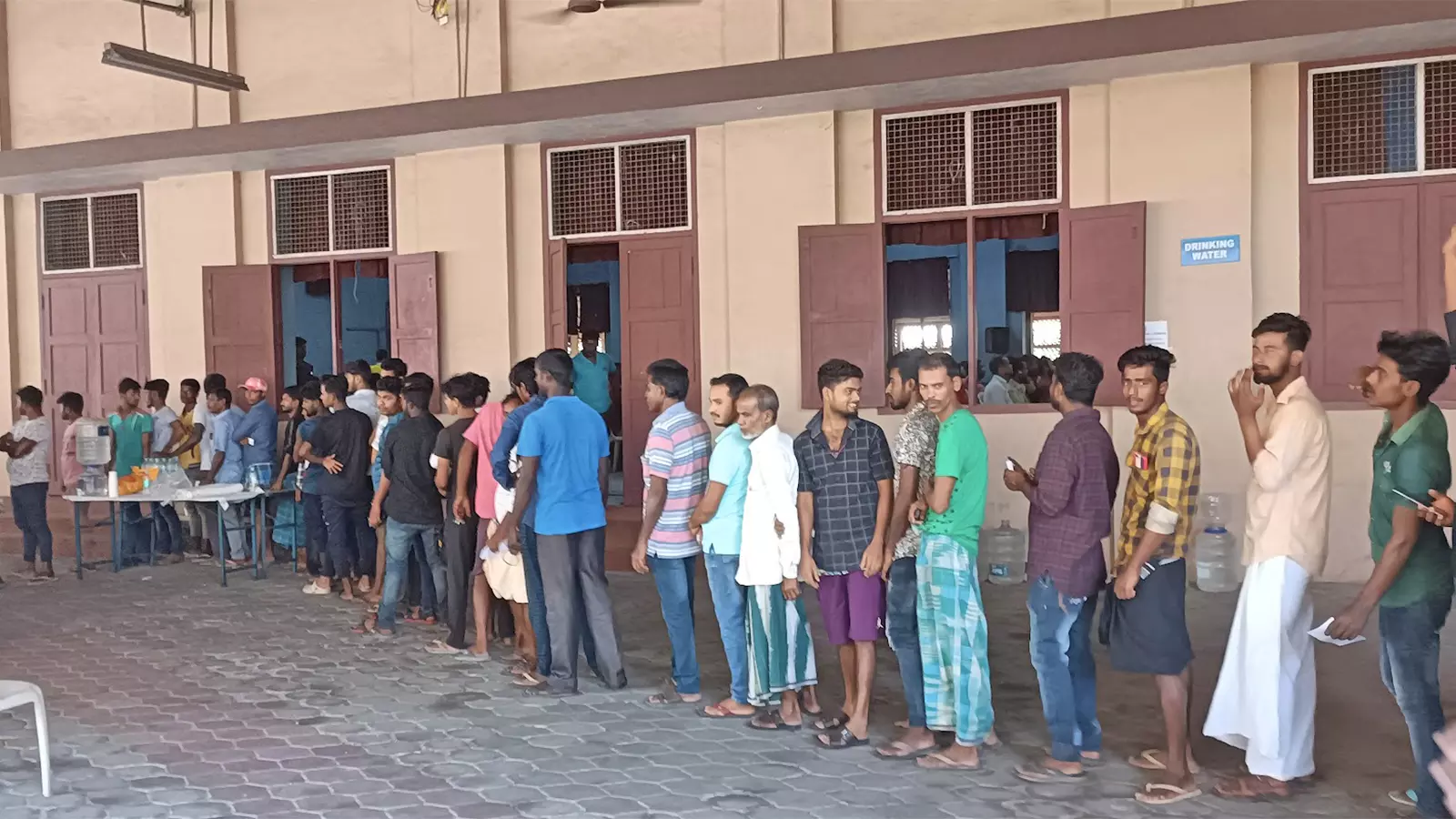
- Home
- India
- World
- Premium
- THE FEDERAL SPECIAL
- Analysis
- States
- Perspective
- Videos
- Sports
- Education
- Entertainment
- Elections
- Features
- Health
- Business
- Series
- In memoriam: Sheikh Mujibur Rahman
- Bishnoi's Men
- NEET TANGLE
- Economy Series
- Earth Day
- Kashmir’s Frozen Turbulence
- India@75
- The legend of Ramjanmabhoomi
- Liberalisation@30
- How to tame a dragon
- Celebrating biodiversity
- Farm Matters
- 50 days of solitude
- Bringing Migrants Home
- Budget 2020
- Jharkhand Votes
- The Federal Investigates
- The Federal Impact
- Vanishing Sand
- Gandhi @ 150
- Andhra Today
- Field report
- Operation Gulmarg
- Pandemic @1 Mn in India
- The Federal Year-End
- The Zero Year
- Science
- Brand studio
- Newsletter
- Elections 2024
- Events
- Home
- IndiaIndia
- World
- Analysis
- StatesStates
- PerspectivePerspective
- VideosVideos
- Sports
- Education
- Entertainment
- ElectionsElections
- Features
- Health
- BusinessBusiness
- Premium
- Loading...
Premium - Events

Many youngsters, especially women, do not want to go back because of the social standards they enjoy hereA significant portion of interstate migrant labourers in Kerala encounter the same issue.On 5 August, 46-year-old Mehraj Hussain, his wife Noorjahan and four children were waiting for Shalimar Express on the way back to their home in 24 Parganas, West Bengal. Their neighbours Debu Haldar...
Many youngsters, especially women, do not want to go back because of the social standards they enjoy hereA significant portion of interstate migrant labourers in Kerala encounter the same issue.On 5 August, 46-year-old Mehraj Hussain, his wife Noorjahan and four children were waiting for Shalimar Express on the way back to their home in 24 Parganas, West Bengal. Their neighbours Debu Haldar and wife Krishna who share the line-room in a rural area of Ernakulam district were also with them.
The friendship between Debu and Mehraj goes back a long way as they started working in the same brick factory in Bengal about 15 years ago. That’s the reason they live close to each other despite their religious faiths being different. The two families had plans to visit their ancestral village during Durga Puja in October, but advanced their journey just because they felt little insecure after the rape and murder of an 11-year-old girl in Aluva in July.
“It’s not that the place is bad or something like that, but when all adults like us go to work, the children are left to themselves. They go to school, but come back by 4 pm. We work till 6-7 in the evening. So, it’s becoming difficult for us to manage. I am planning to drop my family home and hope to come back after the Puja season,” Hussain tells The Federal.
All of them work six days a week in the plywood industry and will be jobless till they return.

A significant portion of interstate migrant labourers in Kerala have to leave their children unattended when they go out to work.
Unfortunately, the Hussains and Haldars aren’t the only families choosing to return to their hometowns from Kerala due to the challenges of balancing childcare with both spouses taking up work. A significant portion of interstate migrant labourers in Kerala encounter the same issue. Despite the fact that Kerala has taken a proactive stance compared to other Indian states by pioneering social security initiatives for various marginalised segments of the population, majority of the migrant workers live substandard lives with housing being one of the prime concerns.
Very little has changed on the ground despite the Kerala government launching several welfare schemes.
In 2019, the state government introduced the Apna Ghar housing project to provide affordable rental housing for migrant labourers within the state. The scheme targeting migrant workers offers dormitory-style accommodations, along with amenities such as cooking and dining spaces, drying areas, and restroom facilities. Migrant workers can access these lodgings at a reduced rental rate through their employers. A single-bed within this accommodation can be availed by migrant labourers at the cost of Rs 1,000 per month. The initiative was initially introduced in the Palakkad district, with the capacity to house up to 620 male individuals and now has extended to other parts as well.
“The project looks ambitious but, in reality is more beneficial to the employers than the workers. They have been apparently relieved from the responsibility of providing accommodation for the labourers,” says Binoy Peter, executive director at the Centre for Migration and Inclusive Development, a non-profit organisation that advocates social inclusion of migrants in India. Furthermore, the project specifically targets bachelors who can be housed within a compact spatial arrangement. “Unfortunately, families and women are largely excluded, and we believe that they constitute the segment that should receive greater attention in terms of housing,” adds Peter.
A significant chunk of the migrant workers coming to Kerala primarily hail from West Bengal, Assam, Bihar, Odisha, Uttar Pradesh, and Tamil Nadu. In schools, their children find it hard to cope with vernacular education.
To address this, the Ernakulam district administration came up with a unique project in collaboration with the District Panchayat, Education Department, SSA, and NGOs to improve the educational performance and social engagement of migrant children. The initiative called ‘Roshni’ was established to foster the educational growth of children from migrant worker families in Ernakulam.
The project’s core objective is to help migrant children attain proficiency in Malayalam, English, and Hindi. This is achieved through a code-switching strategy, utilising special learning materials, and by providing an extra 90 minutes of instruction before regular classes. Educational volunteers fluent in Hindi, Bengali, and Odiya are enlisted to facilitate effective communication with the children and better understand their challenges. Additionally, the project aims to offer a nutritious morning meal, as well as comprehensive workshops and educational tours to enhance the intellectual development of children from migrant labourer families.
“This project is for children who are enrolled in schools. The children of migrant workers are generally multilingual. There are kids from Bihar, West Bengal, Assam and Odisha who speak Hindi, Bangla, Bhojpuri, Odiya and Assamese. Our volunteers help them by translating the classes and text books in their mother tongue,” states CK Prakash, the general coordinator of the project. “We have volunteers from migrants themselves who are multilingual. The project is run in 40 schools but we have only 28 volunteers including some from the migrant workers’ community. We are trying to recruit more volunteers to expand the project,” he added.
“From this year onwards, steps would be taken to give arts and sports training to the children under the project. This is in the wake of the assessment that training in arts and sports would help better the children’s discipline,” says NSK Umesh, district collector, Ernakulam.
A total of 8,121 students are enrolled under the scheme in Classes I to X in the current academic year.

A significant chunk of the migrant workers coming to Kerala primarily hail from West Bengal, Assam, Bihar, Odisha, Uttar Pradesh, and Tamil Nadu.
Twenty-eight-year-old Supriya Debnath, a volunteer from Odisha, has been living in Ernakulam for the last seven years. She knows English and six Indian languages, including Malayalam and Odiya, her mother tongue.
“Children of the age of 9 or 10 from states like Bihar and Assam do not even know how to hold the pencil. The situation back there is that pathetic. We help such children to grasp the lessons by translating texts in their mother tongue. In Kerala, we have a misconception that every non-Malayali knows Hindi, which is baseless. We speak Odiya at home, then how come our kids know Hindi, when they have no exposure to the Hindi-speaking society. Hence, our task involves acquainting them with the lessons,” Supriya explains. Supriya herself migrated to Kerala with her spouse after their wedding. Currently, the couple has two children aged seven and 30 months, respectively.
Hasina Khatun, a 31-year -old woman from Murshidabad, West Bengal is another non-Malayali among the 28-strong volunteer team, who has been actively working for the project in around 40 schools in the district.
“It should have been taken up by the Education Department. Now, with the district administration implementing it as a CSR driven stand-alone project, it lacks sustainability and collective responsibility. Now majority of the teachers do no know the children’s mother tongue, except for a few like Supriya or Haseena. Introducing these children to our Anganwadi system would prove highly effective and secure for their social assimilation. This is an avenue where the government could take meaningful action. But unfortunately, that is not happening, says Binoy Peter.
Twenty-three-year-old Nima Yamang from Arunachal Pradesh works as a hair stylist in Kakkanad, Kochi. She came to Kerala just before the Covid outbreak, and has not gone back. She started as a helper in a saloon and later did a short-term course in make-up and hairstyling before getting promoted as a regular hairstylist.
“I think I would not be going back to my place for good any more. Here, I am decently paid and comfortable,” says Nima. Nima Yamang represents hundreds of young women who migrated to Kerala from the Northeastern states and do not want to go back home.
“Many youngsters, especially women, do not want to go back because of the social standards they enjoy here,” says Binoy Peter. “In their own place they would be compelled to get married and have children at a young age. We have several such cases,” he adds.
Twenty-four-year-old Rupa from Assam and 25-year-old Ashfaq from UP work in a beauty saloon in Kochi and live together. That is the very reason for them to not want to go back.
“We cannot think of having a family together in either of our villages. We have been saving money for some time and we plan to get married and settle down somewhere in Kerala, once our papers are through,” says Ashfaq.
“I have spoken about our decision to my family. They have no issues but we are not welcome there,” says Rupa. Ashfaq, on his part, cannot even think of telling his family or neighbourhood about an interfaith marriage.
“Even though here nobody asks about our caste, there is a kind of alienation. I do not say discrimination or anything, but we are not treated as one among them,” says Madhuri, a restaurant waitress in Kakkanad, Kochi.
“Compared to my state Bengal, discrimination is very low here. But we are aware that those who do menial jobs must be facing discrimination for sure,” she says.
Apart from the high wages for unskilled labour and extensive employment possibilities, comparatively better living standards and social inclusivity are the major factors that have contributed to the substantial surge in migrant labour migration in Kerala. Though some of them might not have delivered the intended goals, the state of Kerala has taken a leading role among India’s states by pioneering social security programmes aimed at various marginalised segments of the population.
Implemented in 2010, the Interstate Migrant Workers Welfare Scheme introduced a dedicated fund within the Kerala Building and Other Construction Workers Welfare Board to address the well-being of migrant labourers. Individuals aged between 18 and 60 are eligible to join the programme after completing their first month in the state. They need to pay an annual membership fee of Rs 30, which is renewable. The government and the Kerala Building and Other Construction Workers Welfare Board also contribute to this fund.
“The scheme was an ideal one but it has not been implemented as it was envisioned,” Binoy Peter shares.
The 2010 project is said to have lost steam after the introduction of the Awaz Insurance Scheme to guarantee health insurance and accidental death coverage for interstate migrant workers living in the state.
According to the Administrative Reforms Commission’s (ARC) report of 2018, there is a consistent decline in the number of migrant workers registered under the scheme from 2013. It declined from 10,141 to just 1,978 in the four years between 2013 and 2017.
“The low amount of benefit disbursement may also be indicative of the fact that even the registered workers may not have availed the benefits under the scheme. It is also clear that lack of financial resources was not a major problem in the implementation of the scheme at the current level of enrolment,” observed the commission.
“One of the major issues that the migrant workers face is the inability to access entitlements such as access to Public Distribution System. Interactions with migrant workers indicated that they attach much value to it, it is necessary to include such entitlements into the scheme. Measures should be taken to provide temporary ration card (Food Security Act) for inter-state migrant workers,” reads the ARC report.

Many youngsters, especially women, do not want to go back because of the social standards they enjoy in Kerala.
Now the state government has taken an unprecedented step of introducing Ration Rights Cards (RRCs) for migrant labourers within the state. This move aims to facilitate their access to essential commodities such as rice without any cost. Notably, these cards will be printed in languages including Bengali, Assamese, Odiya, Hindi, and Tamil. Furthermore, the distribution of RRCs will be overseen by officials from civil supplies, police, and revenue departments, with a dedicated counter established in Perumbavoor town on the inaugural day of every month.
According to the experts and even the administrative reforms commission, Kerala’s problem doesn’t lie in the execution of laws, welfare initiatives, or migrant-friendly strategies by governments. Instead, the issue pertains to the extent to which migrant laborers are able to access these benefits. Kerala houses approximately 4 million interstate migrant labourers, yet only 500,000 individuals are enrolled under the AAWAZ scheme. Consequently, the majority of this population is left without access to the same advantages.
Many of these projects did not reach the footloose labour, as a vast majority of them are still out of the data bank of the government and the timings for registration and availing the benefits do not suit the workers who are always on a clock.
“The government offices and officials face a drawback in comparison to non-governmental agents who could provide these services more effectively,” suggests Binoy Peter. He illustrates this with an instance, mentioning that the mobile health clinics operated by CMID successfully draw a significant migrant population, just because they could operate after the regular working hours of the migrants.
Furthermore, migrant communities lack a significant political presence or voting influence that would be substantial enough to garner attention from either the state or prominent political entities.

